St. John, in the US Virgin Islands, is not only known for its pristine beaches and natural beauty but also for its rich historical heritage. The island is home to several captivating historical sites that offer a glimpse into its past. From colonial ruins to ancient petroglyphs, embark on a journey to discover the unique history of St. John. Here is a curated list of must-visit historical sites and a suggested self-made tour to help you explore them.
#1
Annaberg Plantation
Explore the rich history of Annaberg Plantation, a fascinating site on St. John in the Virgin Islands. This historic sugar plantation offers a glimpse into the island’s colonial past, showcasing the remains of an 18th-century sugar mill, windmill, and other structures. As you walk through the plantation, you’ll learn about the challenging lives of the enslaved Africans who worked there and the complex history of sugar production.
Annaberg Plantation is part of the Virgin Islands National Park, providing visitors with stunning views of the surrounding hills and turquoise waters of the Caribbean Sea. The site is also home to a variety of native plants and wildlife, making it a great spot for nature enthusiasts. Whether you’re a history buff or just looking to explore St. John’s natural beauty, Annaberg Plantation is a must-visit destination that offers a poignant and educational experience.
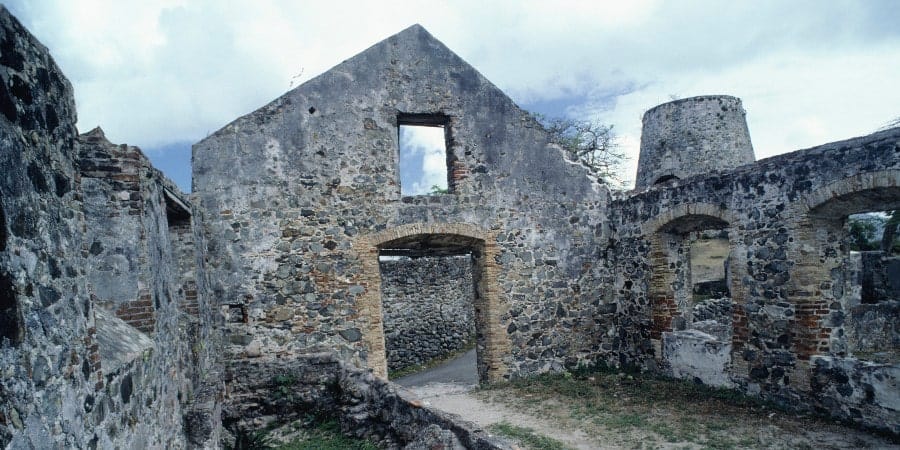
Accessibility: Open to the public.
Address: North Shore Road, Leinster Bay, St. John, USVI.
#2
Cinnamon Bay Archaeological Site
Discover the intriguing Cinnamon Bay Archaeological Site, nestled within the Virgin Islands National Park on St. John. This site offers a fascinating glimpse into the island’s prehistoric and colonial history. Excavations have unearthed artifacts from the indigenous Taino people, revealing their rich culture and way of life long before European contact. Visitors can explore the remnants of ancient settlements and learn about the Taino’s sophisticated craftsmanship and spiritual practices.
Cinnamon Bay is also home to the ruins of a Danish colonial-era sugar plantation, highlighting the island’s later history of sugar production and the impact of European colonization. The site is set against the stunning backdrop of Cinnamon Bay Beach, where pristine white sands and clear blue waters offer a perfect place to relax and reflect on the island’s past.
Whether you’re a history enthusiast or a curious traveler, Cinnamon Bay Archaeological Site provides a unique and educational experience amidst St. John’s natural beauty.
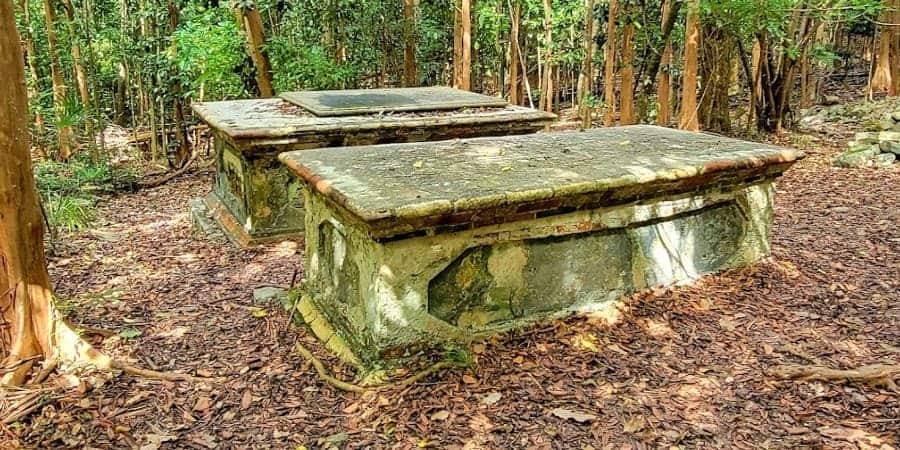
Accessibility: Open to the public.
Address: Cinnamon Bay, St. John, USVI.
#3
Reef Bay Sugar Factory
Explore the Reef Bay Sugar Factory, a captivating historical site nestled within the Virgin Islands National Park on St. John. This well-preserved factory offers an in-depth look into the island’s sugar production era during the 18th and 19th centuries. Visitors can wander through the remains of the sugar mill, rum still, and various factory buildings, gaining insights into the labor-intensive processes that defined the island’s economy.
The Reef Bay Sugar Factory is accessible via a scenic hike through lush tropical forests, adding an element of adventure to your historical exploration. Along the trail, you’ll encounter ancient petroglyphs created by the Taino people, further enriching your understanding of the island’s diverse heritage.
Guided tours provide detailed narratives about the factory’s operations and the lives of the enslaved Africans who worked there, offering a poignant reminder of the island’s complex past. The Reef Bay Sugar Factory is a must-visit for history enthusiasts and nature lovers alike, blending historical discovery with natural beauty.
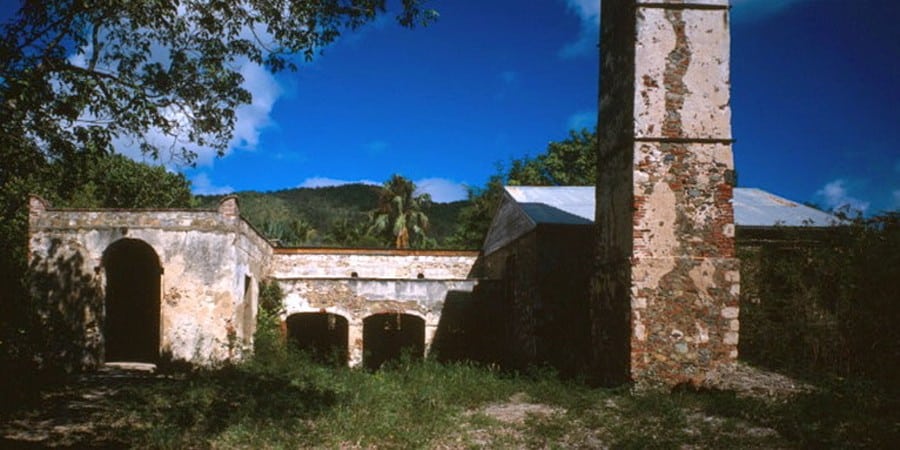
Accessibility: Accessible via the Reef Bay Trail.
Address: Reef Bay Trail, St. John, USVI.\
#4
Petroglyphs at Reef Bay
Located along the Reef Bay Trail, the petroglyphs are ancient rock carvings made by the Taino Indians. The symbols provide insights into the indigenous people’s culture and beliefs.
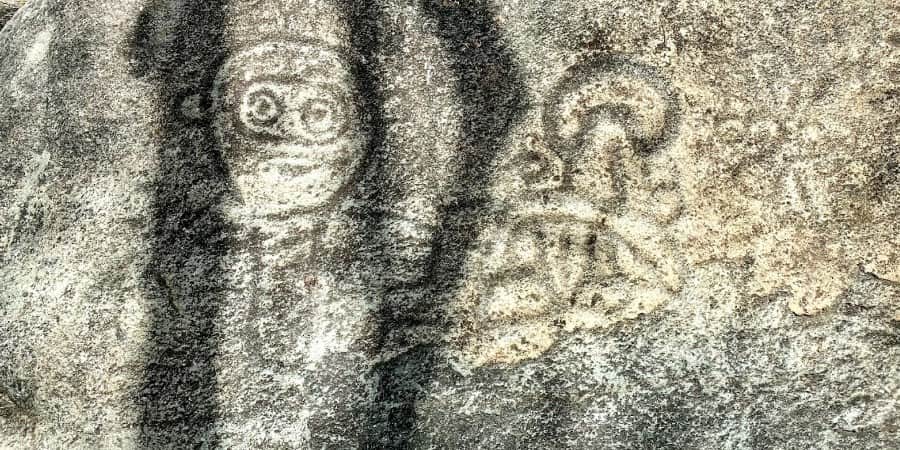
Accessibility: Accessible via the Reef Bay Trail.
Address: Reef Bay Trail, St. John, USVI.
#5
Emmaus Moravian Church
Discover the historic Emmaus Moravian Church, a charming landmark located in Coral Bay on St. John in the Virgin Islands. Established in 1782, this church is one of the oldest in the region and stands as a testament to the island’s rich cultural and religious heritage. The church’s simple yet elegant architecture reflects the traditional Moravian style, offering a serene and picturesque setting for visitors.
Emmaus Moravian Church played a significant role in the spiritual and social lives of the island’s inhabitants, particularly the enslaved and freed African communities. Today, the church remains an active place of worship and community gathering, continuing its legacy of faith and fellowship.
Visitors can explore the beautiful grounds, including the historic cemetery, which provides a poignant glimpse into the past. Whether you’re interested in history, architecture, or spirituality, a visit to Emmaus Moravian Church offers a unique and enriching experience amidst the tranquil beauty of St. John.
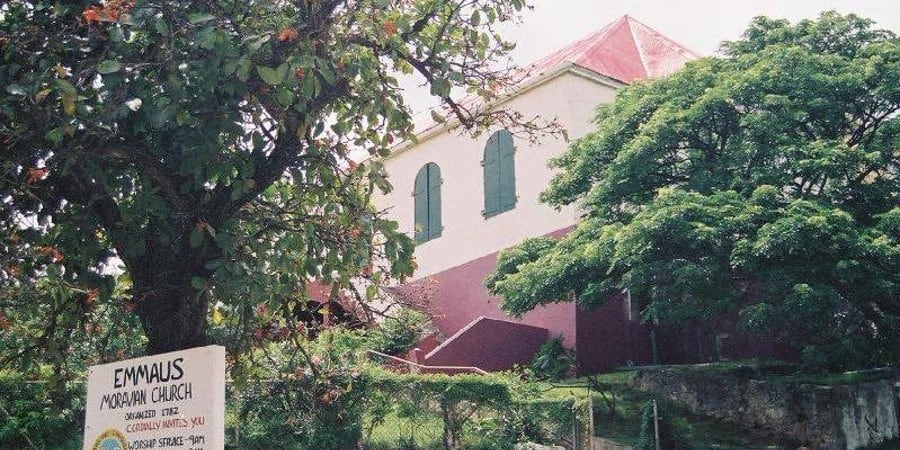
Accessibility: Open to the public.
Address: Centerline Road, Emmaus, St. John, USVI.
#6
Virgin Islands Retreats: Self-Guided Tour of St John historical Sites
- Start your historical tour at Annaberg Plantation. Explore the ruins and learn about the island’s sugar production history.
- Head to Cinnamon Bay Archaeological Site to witness the remnants of an ancient village and discover the island’s pre-Columbian heritage.
- Continue your journey to the Reef Bay Sugar Factory. Hike the Reef Bay Trail and marvel at the well-preserved windmill and factory ruins.
- Along the Reef Bay Trail, take a detour to discover the mesmerizing Petroglyphs at Reef Bay. Take your time to appreciate these ancient rock carvings.
- Wrap up your historical tour at Emmaus Moravian Church. Admire the church’s architecture and soak in the peaceful ambiance.
As you embark on this self-made tour, remember to bring water, wear comfortable walking shoes, and pack sunscreen. Immerse yourself in the stories of the past, as you explore St. John’s historical sites and embrace the island’s rich cultural heritage.


